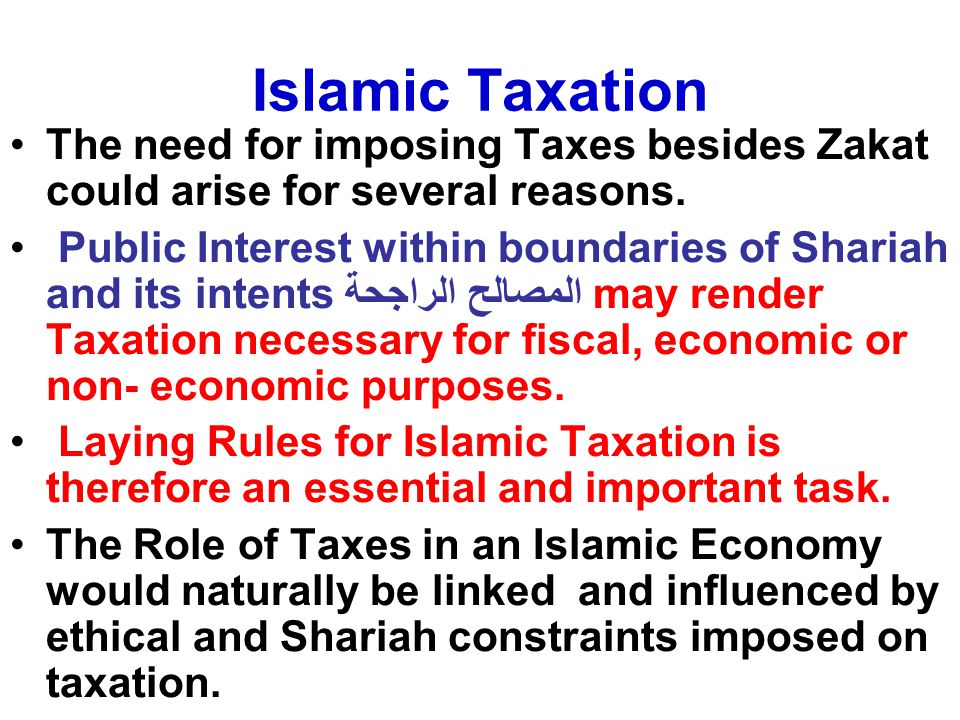
Islam Under And After Mao
The establishment of the Communist order in China had the effect of an earthquake, with periods of lull preceding aftershock, and focused primarily on agrarian and land reforms. As in the Soviet Union, PRC’s minorities (minzu in Chinese) posed a vexed problem to Mao’s revolutionary line: the religious, cultural and historical specificities of minorities should be respected but they had to ultimately be absorbed into socialism; every ethnic group and religious minority had the right to autonomy but was expected to build up China’s national unity. Such contradictions in law bred confusion. Xinjiang officially acquired the status of Autonomous Region in 1955 but remained entirely dependent on Beijing’s decisions. The policy towards Islam, whether of Uighurs, Kazakhs, Huis or any Muslim minorities, promoted by the Islamic Association of China (Zhongguo yisilanjiao xiehui, created in 1953), followed a sinuous route, forcing the religious actors to constantly adapt to changing contexts. ‘These actors themselves had not always firmed convictions and changed their attitude along their life.
Islam In Danger
Islam itself was not yet a target of the government, though many laws served to undermine it, including the abolition of Shari’a in 1950, the Agrarian Reform Law in the same year, the Land Reform of 1952, and the “struggle against overlords” (zomigärlärgä qarshi turush in Uighur), which imposed both the confiscation of lands related to shrines or belonging to religious landlords, and the redistribution of the means of production to peasants and farm laborers, Islam itself was not yet a target. In other words, mosques and religious schools and colleges did not close, shrines and some Sufi lodges were impoverished but still active, Islamic festivals were permitted, and the local branches of the CPC did not persecute religious people such as imams, mullahs, healers, even īshāns, and the communities structured around them. Although reliable sources are missing, it is probable that Sufis were among the first religious leaders to oppose these reforms. The case of two īshāns from Qaraqash (near Khotan) illustrate this point: between 1954 and 1957, a certain Abdulhemit and a female saint named Khelichikhan would have gathered many disciples and tried to organize a revolt to set up an Islamic state. Though there is little information on what exactly happened, it is clear that if the story is true, the movement was probably crushed almost immediately.
The Great Leap Forward (chong särkäsh in Uighur) launched by Mao Zedong in 1958 marked a dramatic break with the relative leniency of the revolutionary period. The collectivization of the oases economy made the Communist cadres the new rulers of the rural Uighur communities. The religious elite, including Sufis, was accused of forming a class of feudal exploiters and of representing an ethnic nationalist threat. The land properties related to mosques were confiscated and all Islamic schools and colleges were closed and turned into restaurants, storehouses, or other businesses. Islamic preachers lost their incomes and their social privileges; teachers and students resigned from madrasas and renounced religious studies. Some of them became members of the CPC while others worked as lay teachers. Several, however, taught secret religious classes. Quite reminiscent of the Islamic Reformist attempts against saint veneration, important shrines were progressively deprived of these symbols of sanctity and veneration, including the ex-votos (lata), the wooden poles (tugh) and the fabric banners (äläm). Thus, after having lost all its sacred symbols, the famous complex of Āfāq Khwāja near Kashgar was turned into a museum as early as 1957. In other cases, it is the large gatherings on holy sites which were forbidden and the places of sociability, such as shrine inns, closed. Sufi lodges were also closed by the authorities and Sufi ceremonies, viewed as subversive activities, were banned. In 1962, under the mandate of Wang Enmao, the first Secretary of the CPC branch in Xinjiang, the repression of Islam ceased in order to respect what the PRC officials called “the national characteristics of minorities”. Some previously closed mosques and religious schools reopened, and a few religious dignitaries rehabilitated.
The lull stopped in the summer of 1966 when the Cultural Revolution (mädäniyät inqilabi in Uighur) started. As elsewhere throughout China, religion was declared a part of the “four oldies” (töt kona): old ideas, old culture, old customs, and old habits. Besides the political turmoil and the economic disaster, what happened exactly to Islam in Xinjiang? In the absence of accessible records, historians rely mostly on oral testimonies, official Uighur publications and a handful of unpublished materials. During street fighting in Qomul, Khotan or Kashgar for example official buildings were burned and people murdered. In an hysterical atmosphere, Red Guards and propaganda teams attacked mosques as well as shrines. It seems that, in Xinjiang, at least a third of the religious buildings were either destroyed, deteriorated or looted. Intellectuals, such as Qadir Akhun (1890–1970) in Mäkit and Niyaz Dotäy (1894–1966?) in Aksu, who had considered Islamic Reformism compatible with Mao’s “Liberation” were persecuted or executed. Many religious leaders (preachers, healers, scholars, mystics) were verbally harassed, others were beaten, and an undetermined number deported to labor camps or executed. Religious observances — among them, Ramadan, hajj pilgrimage and funeral rites — were prohibited. Outward expressions of faith such as long beards and turbans were prohibited too. Religious books, including the Qur’an, were burned publicly in front of mosques. The publication of Uighur literature was halted. Though the Cultural Revolution officially ended in 1969, it continued on a smaller scale until the early 1970s and the repression against religions began to die out with Mao’s death in 1976. The impact of these years on religious life and culture has been catastrophic, leaving deep scars among Muslims of this generation. Even so, we find here and there evidences that Islamic culture and education did not disappear. An interesting example is the scholar Uyup Nizamuddin Haji Damolla (d. 1994): trained in the Bagri Madrasa in Turfan then at Bombay in India, he returned to Xinjiang in 1943 after having completed his hajj. Arrested in 1949, 1958, and 1966, he was tortured by the Red Guards. He was nevertheless able to educate a circle of students throughout his career, raising him to the status of a modern saint.
An Islamic Revival?
The post-Mao period marked a turning point in the policy towards Islam, although this was not without ambiguities. Under the rule of Deng Xiaoping (1904–1997), the CPC officially recognized the Muslim ethnic minorities, including their own culture and religion, but did not give real autonomy to Autonomous Regions such as Xinjiang. The economic and political situation improved considerably in Western China, although several clashes erupted between people and police, for example in Aksu in April 1980 and in Kashgar in October 1981. Regarding Islam in the region during the 1980–1990s, four main aspects illustrate not only the contradictions of the PRC’s religious policy but also the tensions among the Uighur religious and intellectual elite.
Pious visits to shrines (ziyārat) were once again permitted. Many holy sites were restored and reconstructed. On mazārs, believers could recite prayers, ask for supernatural help, perform ritual circumambulations (tawāf), bring poles and banners, and even organize festivals (säyli) that incorporated trade fairs, musical performances, and sporting competitions. Not only Uighurs but also Huis, Kazakhs, Salars and other Muslims from the whole Northwest China come to these shrines. However, ziyārat aroused the criticism of Reformist scholars and the hostility of neo-Reformist clerics. The latter, trained to the Hanafi tradition by the generation of Islamic leaders of the 1940s, acknowledged the pious visits but criticized “wrong” practices, such as circumambulations and praying to saints instead of God. The former, trained to the Hanbali School in the 1980s in the Middle East, condemned pious visits as pure idolatry. Lastly, from 1996 onwards, campaigns against “separatism” (fenlie zhuyi in Chinese) and “illegal religious activities” (feifa zongjiao huodong in Chinese) have reintroduced restrictions on pious visits and led to the closure of specific shrines. An eloquent example is the aforementioned Ordām Pādishāh mazār. Formerly a popular place visited by numerous pilgrims throughout the year, with a peak during the annual festival, the shrine closed down in 1997, and the local economy and social life linked to it have vanished.
A real revival of Islamic education began in the 1980s. After thirty years of a low profile, the last generation of educated religious people were allowed to teach the Islamic tradition openly and to recover their social position. Interestingly, in the many Uighur villages of Xinjiang, social order was then based on both Communist cadres and Islamic personnel (dini khadim in Uighur) composed mostly of mullahs and imams. The Islamic education system has been restored with regular lessons given at mosques, advanced classes in “teaching sites” (oqush nuqta) often linked to congregational mosques, such as the Idkah mosque, and the Xinjiang Islam Institute which opened in Urumchi in 1987. The main limitation of this revival is that Islamic education depends entirely on the state’s decisions. All religious scholars must obtain an official authorization by the government. Teachers can be dismissed easily (as in the case of the neo-Reformist preacher of Kashgar Ablimät Damolla in 1997). Institutions can be closed for unknown reasons (as has happened in 1995 to the Bagri “teaching site” in Turfan). The curriculum has been standardized according to the state’s interests, inspired by Islamic Reformism and including heavy CPC propaganda about, for instance, morality and citizenship, with no possibility of alternative teachings.
Sufism suffered greatly after 1949. Although information is scarce due to political sensitivity and to the secrecy surrounding initiatory practices, it is clear though that Sufi groups were never extinguished. Several branches of the already quoted Naqshbandī Mujaddidī lineages survived, and were even revived in the 1980s. The Thāqibiyya, supervised by a reputed master from Turfan, Shah-i Mardan (d. 1987), included an important branch of Hui disciples located in Shihezi (in Northeastern Xinjiang). The Jahriyya had two active branches still active in the South in the 1990s, run respectively by Tukshun Ishan (d. 1997) and by Ubayd Allah (d. 1993). Hui Jahrī groups also exist in the North. The Chishtiyya order, introduced in Xinjiang in the nineteenth century from India or Afghanistan, is well represented in Khotan and Qaraqash regions. Lastly, we still find some Qalandar dervishes called ashiq begging and singing during shrine festivals. However, obstacles to Sufism have accumulated. Each group requires an official authorization, which is often difficult to acquire. The lack of financial resources has stifled several lineages. Thirty years of repression of Sufis have interrupted chains of transmission (silsila) from master to master, limiting religious knowledge and spiritual authority, and making it impossible to find successors to deceased masters (as has happened to a Jahrī branch in Kashgar). More subtly, the constant discourse against Sufism and its historical past, through great figures such as the Khwājas especially (as demonstrated in a series of three historical novels written by Abduwäli Äli published in 2000), had propagated a biased and negative vision of Sufism among the populace, at worst, and at best raised serious challenges to the Sufi legacy.
A fourth major aspect of Islam in Xinjiang regards “folk” healing and the question of Shamanism. In parallel with Chinese and Western medicines, traditional Islamic treatments continued to be practiced by specific healers but has been condemned as superstitious by both Islamic Reformist authorities and Communist cadres. Healers (bakhshi, perikhun) suffered severe persecution after 1949 and are remain banned by the government. At the theoretical level, in the 1990s and 2000s Uighur and Chinese scholars have studied “folk” healing and considered it a pre-Islamic phenomenon which refers to Shamanism. In other words, these practices, being remnants of ancient Turkic beliefs, prove that the Islamization of Central Asia has been superficial or, at least, uncompleted. Several Western scholars adamantly opposed this approach, labelled as “sovietological” because of its clear similitude with theories of Soviet Islamic studies, arguing that these practices are Islamic from the religious actors’ viewpoint and belonging to the sphere of domestic cults as is found elsewhere in Muslim societies. Beyond this debate, it is more relevant to understand the Uighurs’ recent interest for Shamanism not simplistically as “sovietological” but as the modern, and politically sensitive, form of an older discourse by Central Asian intellectuals themselves on Islam and the Islamization of the Tarim basin. The first traces of such a discourse date back to the early twentieth century under the pen of Tatar travelers and Uighur Reformists who studied various rituals and practices in Eastern Turkestan.
Islam Under And After Mao
803 – 022
Home
Last Updated: 04/2022
See COPYRIGHT information below.



